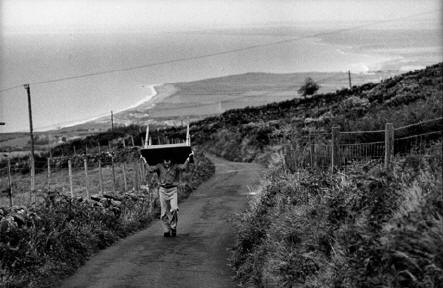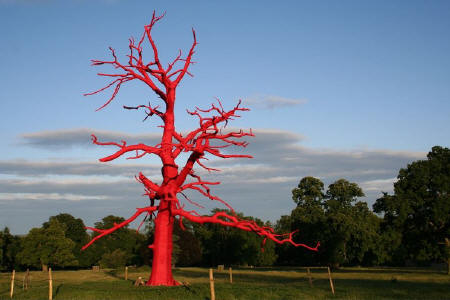|
|
| home | features | exhibitions | interviews | profiles | webprojects | gazetteer | links | archive | forum |
| Reclaiming the rural 1: Landscapes and modernity
Kristopher
Kohler
Whilst it is not possible to agree with this assertion in its entirety, the fundamental premise is correct. The urbancentric nature of the majority of cultural discourse often fails to account for the contributions that rurally situated cultural practice affords. The term ‘rural’ encodes a weight of urbancentric prejudice within dominant cultural discourse that is critically tied up with ideas of eurocentricity and logocentricity. Thus the rural has been dismissed as regressive within the binary oppositions of Modernity which instead construe the urban as the exclusive domain of the radical. Such an attitude is essentially the hangover of certain conceptions of homogeneous, centralised, progressive Modernity.
Thus when man, investigating or observing, pursues nature as an area of his own conceiving, he has already been claimed by a way of revealing that challenges him to approach nature as an object of research, until even the object disappears into the objectlessness of Standing-Reserve3). The development of global capitalism in 19th century across Western Europe and the US saw firstly the binary delineation of the rural as the negative other of the urban, and then the transformation of this rural space into both standing reserve and spectacle. The spectacle of the landscape was touched upon by Benjamin in his references to the proto-cinematic landscape panoramas of the Paris arcades, and it is a definition consistent with Debord's concept of the spectacle and his assertion that 'the spectacle is capital accumulated to the point that it becomes images'4). The images of the rural that permeated 19th Century dominant cultural discourse were, although ostensibly Romantic, in fact the manifestation of this spectacle. The original Romantic conception of the rural in its sublimity, though appearing spectacular had in fact largely been the result of rurally situated practice. It is this difference that is exposed by Debord's Heideggerian definition. The landscape painting is the urban bourgeois transformation of rural space into Standing Reserve, a spectacular accumulation of capital.
The idea that something is no longer singular but constantly undergoing singularisation, differentiation, at first seems at odds with a conception of the rural as a site of embeddedness and tradition. However, when we loosen our conceptions of singularity and with them fixed notions of signification, via a process of deconstruction, we can break down the binarism between urban and rural that constitutes rural in the negative, as the inferior aspect of such an opposition. Through such a deconstructive approach the apparent static, embedded and monolithic notion of tradition breaks down and we can perceive tradition as a constantly fluid process of becoming within the social and relational body. Those aspects of rural culture characterised as provincial, peripheral, amateurish, unengaged and overly traditional by a dominant, urban capitalist discourse are deconstructed one by one by such an approach. When form is perceived as trajectory and social relations as aesthetics then the traditional, the realm of folklore, becomes the site of radical artistic contestation.
1) Francois Matarasso, On the Edge: art, culture and rural communities, pg27, www.ontheedgeresearch.org given in Rosemary Shirley, Country Living AN: The Artists Information Company, 2007. 2) Nicolas Bourriaud, Altermodern, London, Tate Publishing, 2009 3) Martin Heidegger, A Question Concerning Technology, given in Basic Writings of Martin Heidegger, ed. David Farrell Krell, (London, Routledge, 1993) 324. 4) Guy Debord, The Society of the Spectacle, Paris, 1967. Translated by Ken Knabb, chapter one, section 34. given in Bureau of Public Secrets, http://www.bopsecrets.org/SI/debord/1.htm 5) Umberto Eco, Dreaming of the Middle Ages, in Travels in Hyperreality transl. by W. Weaver, NY: Harcourt Brace, 1986
Artworks on this page (top to bottom) are by Simon Whitehead, Jennie Savage and Philippa Lawrence.
|



